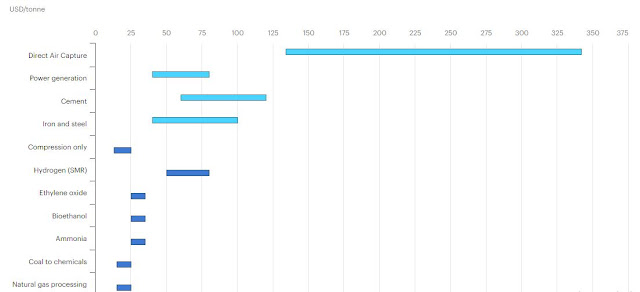Carbon capture refers to removing carbon dioxide usually from emissions at an industrial plant. Storage (sequestration) refers to storing that removed CO2 below ground, for hundreds or thousands of years. It has been in practice for decades, but carbon dioxide is currently sequestered at a rate of 0.2% of the rate emitted.
The removal process is most efficient at point sources, such as the smokestacks of power plants and factories. Carbon removal can happen pre- or post-combustion. Pre-combustion remove, the more common form, involves oxidizing the fuel under very controlled circumstances, producing carbon monoxide (CO), which then reacts with steam to produce CO2. The exhaust is quite pure and easy to store.
Post-combustion removal involves units known as scrubbers, which can be retrofitted onto existing stacks. This is the best-known, though little-used, option. A third option is burning the fuel using pure oxygen (O2), not air, which purifies the exhaust and makes carbon dioxide easier to separate and store. The CO2 is delivered, usually via pipeline, to a storage plant using geological formations for storage, not unlike the annual natural gas winter reserve.
Major limitations on the use of carbon capture and storage
are the energy required (up to 40% of the output of the plant in question—known
as an energy penalty). When the benefits of carbon capture and storage are
calculated, the extra energy required for the capture, compression, transport
and storage are not always included—costs which would lower the benefit
significantly.
Cost (USD) for carbon dioxide capture compared to various industrial products, by ton.
Depending on the industry—power generation, steel, concrete manufacturing or other industrial process—the cost to remove and sequester CO2 can range from $30-120 per ton. While not prohibitively expensive in most cases, the monetary cost and energy penalty have kept this entire strategy from coming into wider use globally.







No comments:
Post a Comment